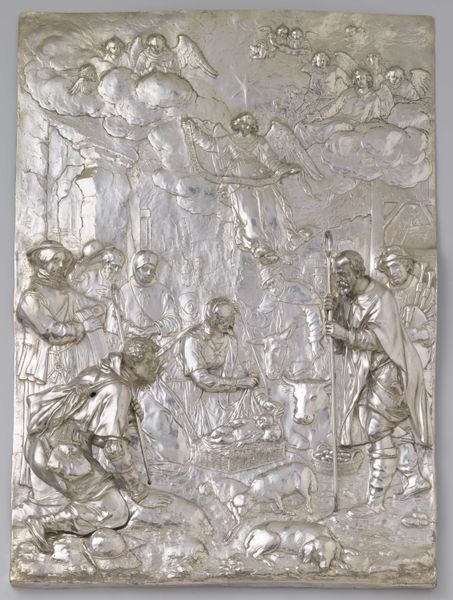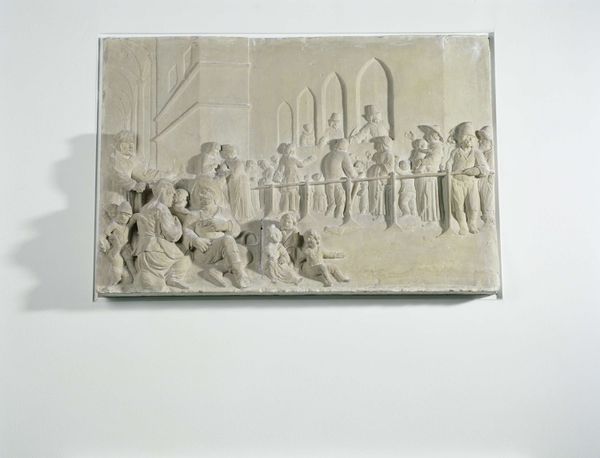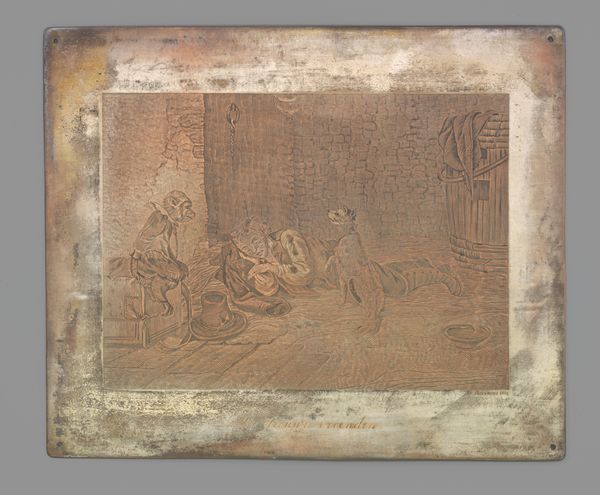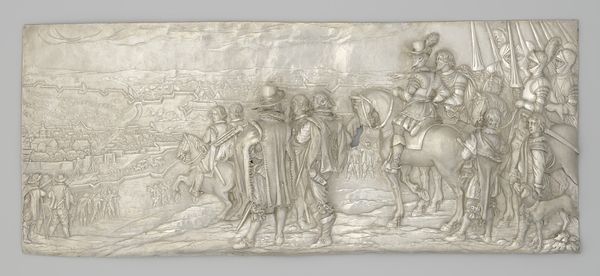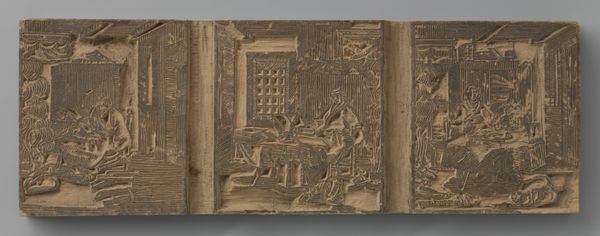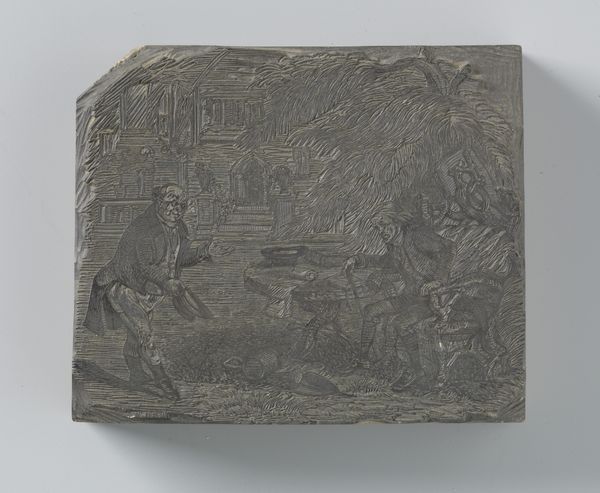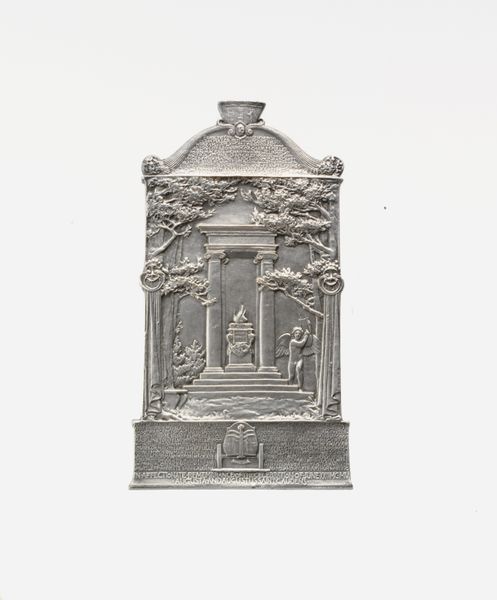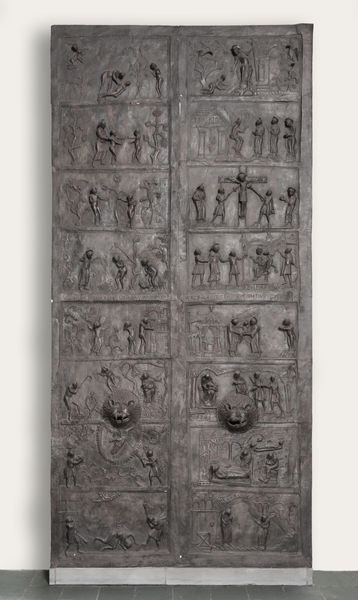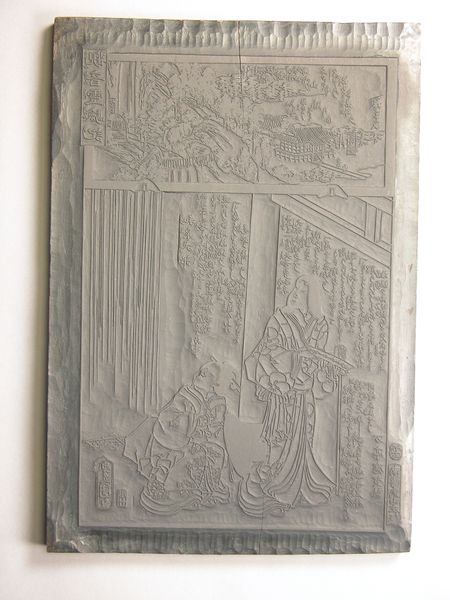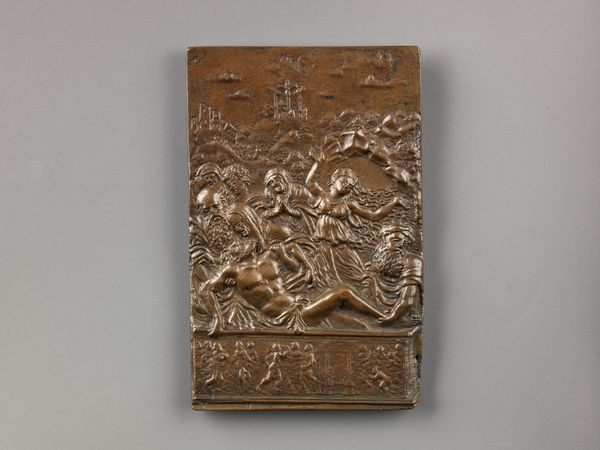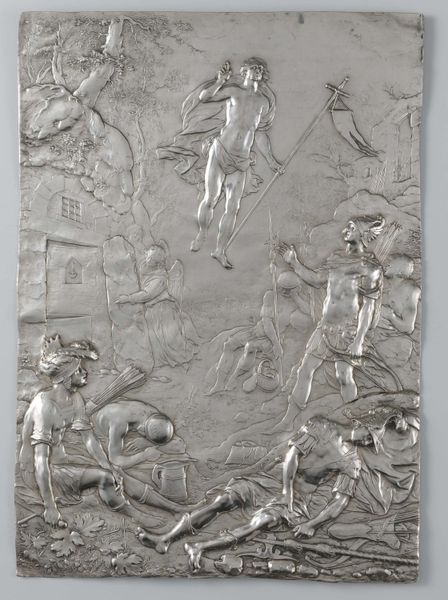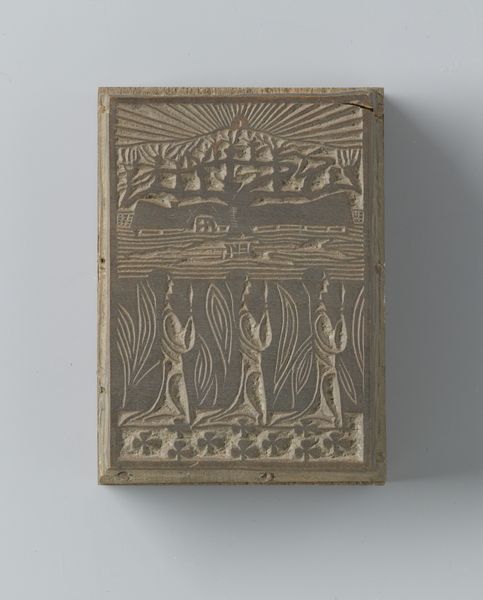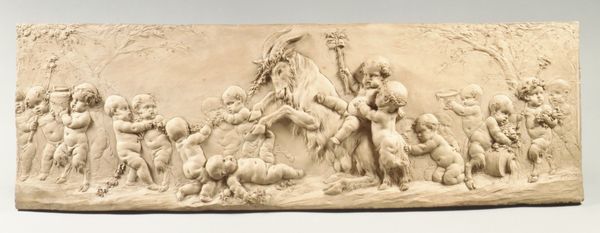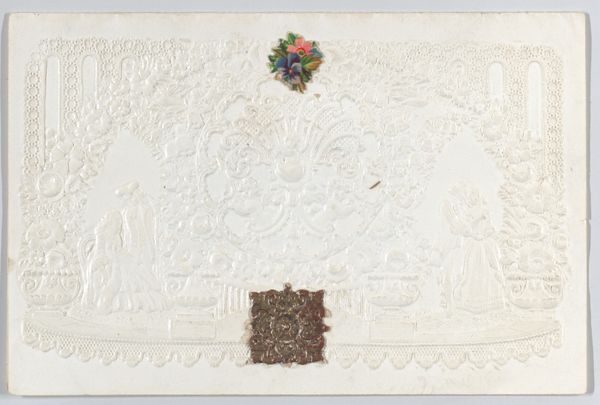
Landscape with Numa Pompilius and the Nymph Egeria c. 1560 - 1570
0:00
0:00
sculpture, marble
#
high-renaissance
#
sculpture
#
landscape
#
classical-realism
#
sculpture
#
marble
Dimensions: height 38 cm, width 43.5 cm, depth 2.2 cm, weight 10.2 kg
Copyright: Rijks Museum: Open Domain
Editor: Right now, we're looking at "Landscape with Numa Pompilius and the Nymph Egeria", a marble relief sculpture by Francesco Primaticcio, dating from around 1560 to 1570. The landscape is so detailed, almost dreamlike. What stands out to you as you look at it? Curator: You know, I'm struck by the contrast between the mythological figures and the very real architectural structures. It’s as if Primaticcio is collapsing time and space, inviting us into a conversation between the ancient past and his present. Does the texture of the marble draw you in at all? It's whispering secrets. Editor: It does! The smoothness gives the scene a serene quality, even though there's so much going on. What's the story behind Numa Pompilius and Egeria, and how does it relate to the Renaissance interest in classical antiquity? Curator: Numa, the second king of Rome, sought divine wisdom from the nymph Egeria in a sacred grove. It's all about the search for knowledge, aligning with Renaissance humanism, right? Primaticcio uses that scene to ennoble rulers and celebrate the rebirth of classical ideals in art. Editor: The attention to detail is incredible. It makes me wonder, what kind of tools did he use? Curator: Imagine the patience and skill it took to coax this level of detail from a block of marble! Chisels, rasps, probably a few well-kept secrets known only to Renaissance sculptors. The real magic, though, is how Primaticcio imbued cold stone with such palpable life. He breathes new life into the stories that mattered most. Editor: Seeing it this way really opens my eyes to the artistry involved. Thank you! Curator: And thank you. It’s refreshing to be reminded that art, at its core, is about connection – with history, with ideas, with each other.
Comments
No comments
Be the first to comment and join the conversation on the ultimate creative platform.
